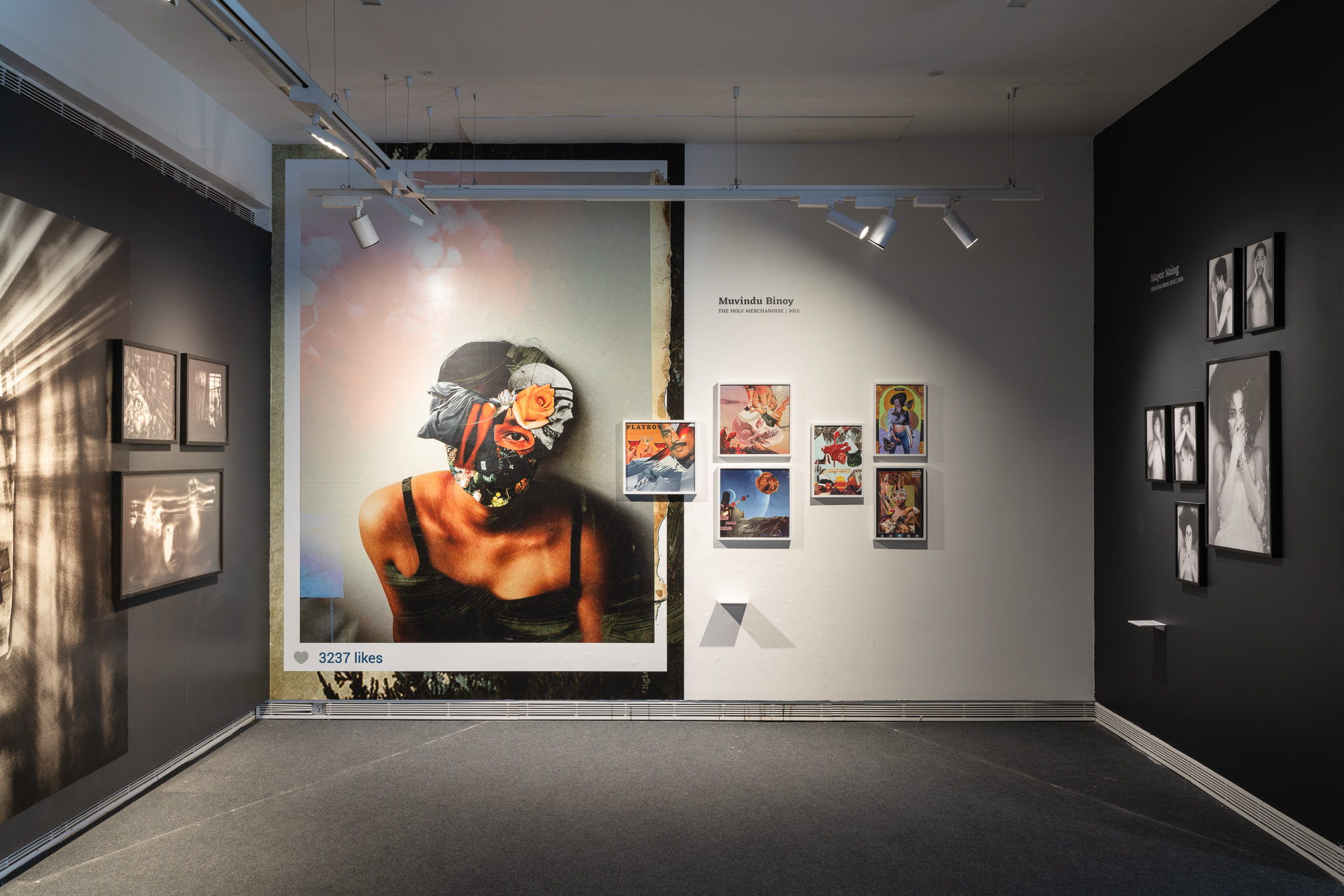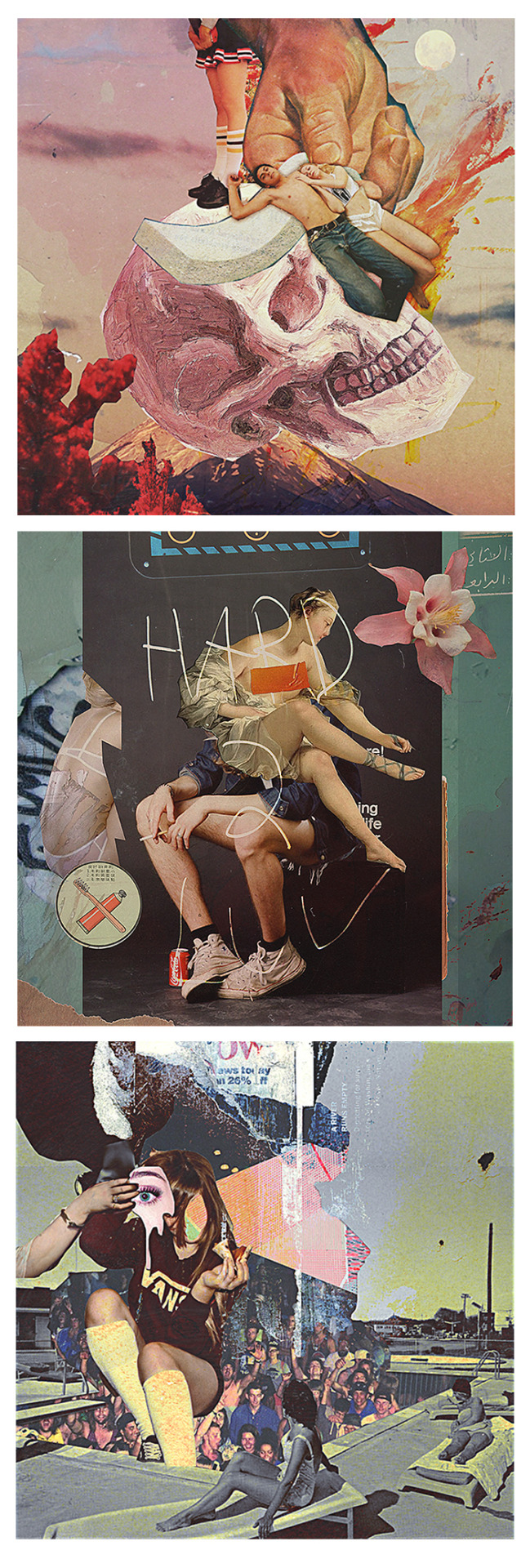Collage as a Post Historic Strategy

“Collage is the noble conquest of the irrational, the coupling of two realities, irreconcilable in appearance, upon a plane which apparently does not suit them.” – Max Ernst
Asking critical questions about the experience of war – something he sees as less of an event and more as a prolonged state of existence for this region of conflict, Muvindu Binoy works across various media, often dissolving boundaries between visual art, video and music.

In his series of collages titled “The Holy Merchandise”, Binoy overlays vintage South Asian imagery with visuals from contemporary advertising, internet culture and scientific illustrations. As such, he talks about a collapsing of time and history – and the absolute mediation of truth within which we exist as citizens of the internet. Collage and montage have historically been used by the Dadaists in the 1930s and continued in the 60s and 70s Pop Artists in America to express a deep inability to reconcile with public narratives of violence. Collage also has its roots in cubism – and contains a similar confusion of perspective or vantage point from which to the view the world. Closer home, his works follows the lines of artists like Vivek Vilasini who drew from American pop artists like Richard Hamilton and created stark assemblages of pop imagery from South Asia, commenting on the commodification of “Indian” culture in various forms.

Between One Shore and Several Others, Vivek Vilasini
Living in the internet age, Binoy also draws from the global ‘pop’ culture of the internet, juxtaposing images of the Kardashians with tribal Ceylonese women from Sri Lanka or image of the natural world with hyperreal fashion advertisements. His video collages and montages also draw heavily from the video cultures of the 90s and early 2000s – he cites MTV as a founding influence on his aesthetic. Creating absurd, dark humour narratives by re-appropriating media from multiple sources and historical times, Binoy creates a portrait of alienation in the digital age – one where access to information is constantly accompanied by the market’s complete capture of our visual world.

Comments